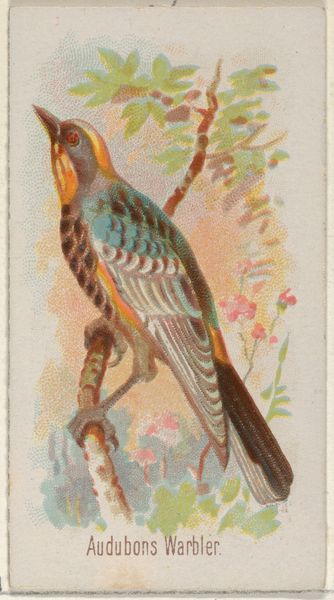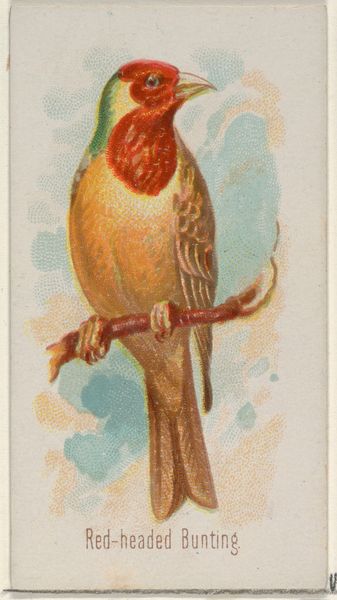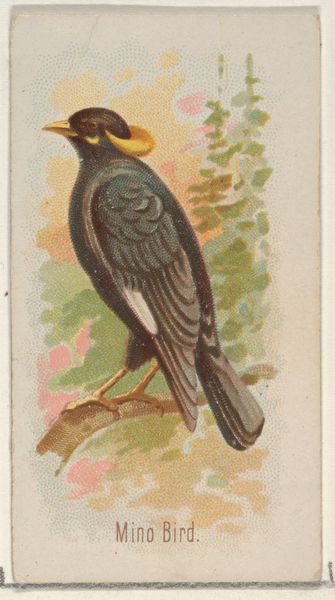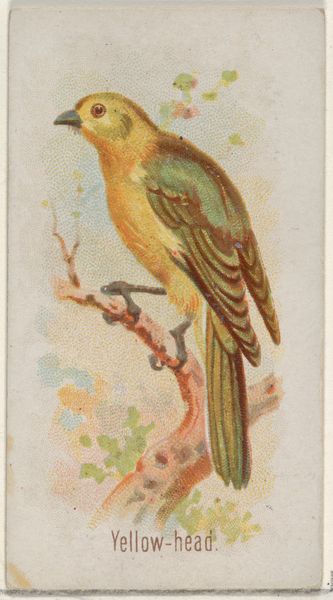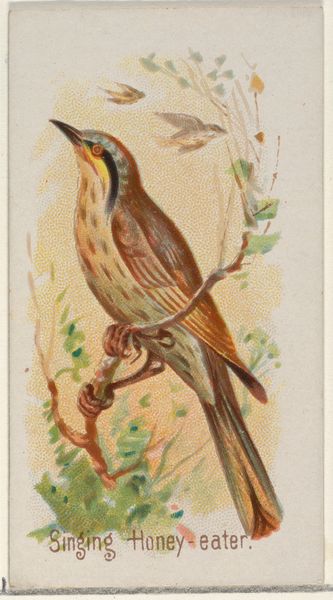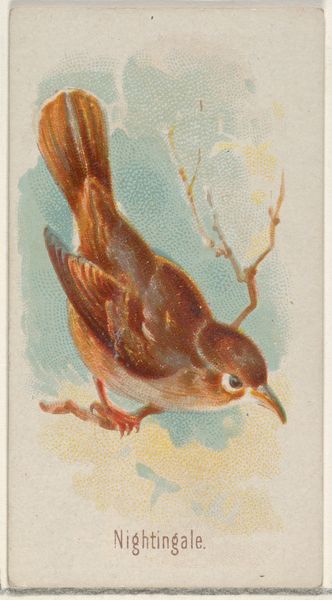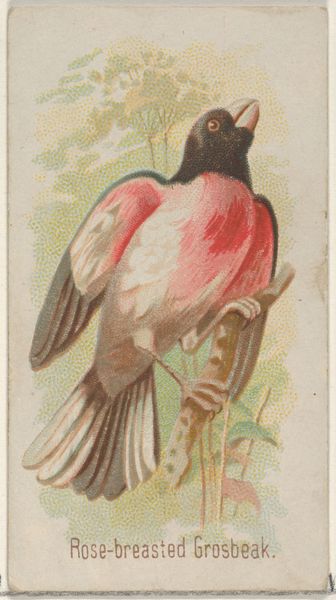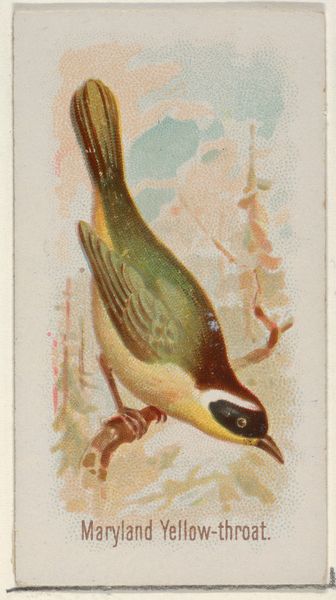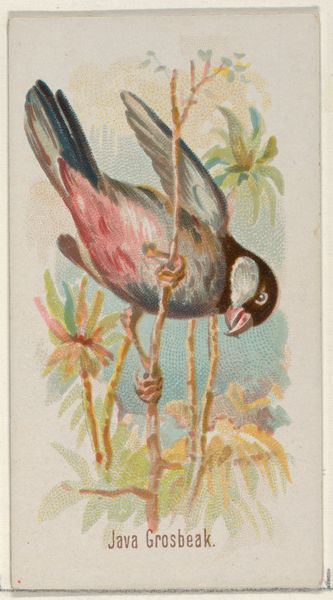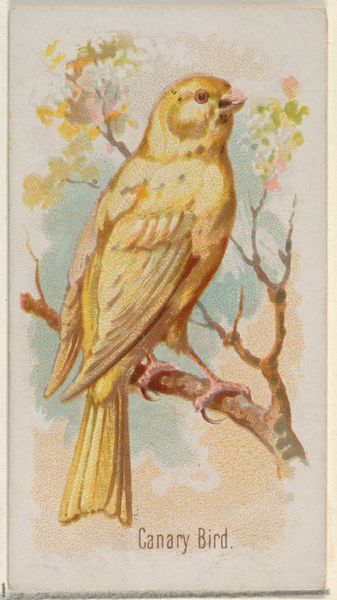
Chinese Bulbul, from the Song Birds of the World series (N23) for Allen & Ginter Cigarettes 1890
0:00
0:00
Dimensions: Sheet: 2 3/4 x 1 1/2 in. (7 x 3.8 cm)
Copyright: Public Domain
Editor: So, this is the "Chinese Bulbul" print from around 1890, part of Allen & Ginter's "Song Birds of the World" series. It’s a drawing made with coloured pencils, and it really stands out because of its delicacy and that almost Japanese-style aesthetic. What's your take on it? Curator: This print intrigues me. Let's look beyond the charming image of the bird. It was created as a cigarette card, designed for mass consumption. How does the act of production – a print designed to be included in cigarette packs – change our perception of it? The materiality itself speaks volumes. Editor: I see your point! It’s not just art for art's sake, but a commercial object first. The style referencing ukiyo-e suggests an exoticism that was marketable at the time, right? Curator: Exactly! And what does the distribution via cigarettes tell us? It's art entering everyday life through a vehicle promoting consumption. This Orientalist style – what does it borrow, what does it leave out? It simplifies the process of the original material culture while furthering the capitalist agenda. Think about who made the drawings, their labor, the distribution networks. How do all of these contribute to the final image and the consumer experience? Editor: It’s making me reconsider the whole thing! I was focusing on its aesthetic qualities but now it seems like understanding the manufacturing is crucial to understanding the artwork. Curator: Precisely! It challenges traditional boundaries of "high art" and craft. The bulbul bird itself is almost incidental. Consider the layers of production and the socio-economic factors behind it. The context in which this image was made becomes deeply relevant, right? Editor: Right, I’ll never look at these little cards the same way again. Thinking about the labour involved and the context of consumption is fascinating. Curator: Agreed. Materiality opens doors to asking bigger questions.
Comments
No comments
Be the first to comment and join the conversation on the ultimate creative platform.
